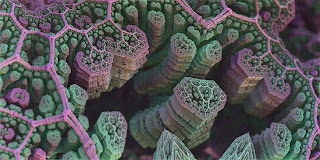Pharmaceutical Microbiology Full Curriculum In Pharmacy School
Pharmaceutical microbiology (PCM) is a department in pharmacy that relates to biology. So if you like biology, sit down and relax. Your food is served. But that does not mean that it is going to be all rosy. There is always one course that will drag from hell to torment students in each department.
Pharmaceutical microbiology course content
I always like to slip course content into semester and level. But not this time. The course content is not straight because most of the topics are connected at all times.
PMB Course Content
However, it usually begins with life. Remember the list of activities of living things? That is what we are talking about here. That means we are going to talk about cells again. But this time, focus will be on microorganism. This will be the type of fungi, bacteria, viruses and others. Also, the topic will cover their morphology, their growth, how they survive and about their death. Microorganisms growth is not described in terms of size but in population. Lastly, introduction to parasitology, animal parasites and the disease caused by these parasites.
Laboratory work which may begin in the classroom will focus on how to grow these organism in the laboratory under different environmental conditions. How these growth can be calculated using microscope and other forms. The use of microscopes may be included if it has not been done in other departments for that year.
Read Also: Pharmaceutical microbiology project work
Decontamination of pharmaceutical equipment is the desire of a pharmaceutical microbiologist. It began with the implications of contaminated pharmaceutical equipment on pharmaceutical products. Then the types of materials used in the pharmaceutical industry and how to decontaminate them. Each material requires various degrees of decontamination and requires different decontamination agents including methods The effect of each agent on the material is well established. This can help to predict the effect of decontamination agents on other pharmaceutical materials. This includes principle, mode of action, properties and conditions different agents of sterilization function. Then there is a topic on how to know if a sterilization technique is effective.
Types of sterilization include heat (steam air, dry), radiation, gaseous, bactericide, chemical and biological. Pharmaceutical materials include machines, packaging, etc.
Laboratory work includes sterilization techniques and how to carry out sterilization.
There are wide range of pharmaceutical products. Some are to be sterile. Disinfecting the materials for producing them is one step. The product need to be made sterile during production and after production. The excipient must meet this standard. And that only possible excipients undergo different treatment processes. The type of treatment depends so much on the type of excipient. Water is a universal solvent. There are different type of water. The difference is due to the source; tap water, rain water, spring water, etc. This lead to different characteristics and hence different behavior. The whole treatment is to remove pyrogens of different grades depending on the requirements for the final product. Water for mixing oral medicine may not be 100% pyrogens free. But that is not the case with water for injection or water use for ophthalmic preparation. We talk about the danger of non-sterile products. Then how different types of products can be sterilize. The type of medicament and packaging will determine the sterilization method that will be adopted.
The type of pharmaceutical products include injectable sterile fluids, opthalmic preparation, ligature, suture and dressing, thermostatic, etc.
Laboratory work is sterilization of products of different medicines.
Another course will teach us about properties, mechanisms of action and uses of different classes of disinfectant and antiseptic in pharmaceutical microbiology. Another aspect of it will talk about the use of preservatives in pharmaceutical products. The right choice and quantity of preservatives depends on so many factors. A good preservative must be chemically inert, odourless, colourless, tasteless and have other characteristics. A study of factors that can positively or negatively impact on an antimicrobial preservative is highlighted.
Read Also: pharmaceutical microbiology laboratory experiment
Good manufacturing practice is a process that each company adopts to ensure their final product gets to the customer safely and still retains effectiveness. That is a whole lot of class work and requires a whole semester to handle. It was interesting because here you will hear about laminar airflow and other methods of keeping a production unit safe for pharmaceutical products. Then also how these products can be protected during packaging and transportation to their consumer. They will also talk about the nature of contaminants of each stage and the danger to the consumer and finally how to prevent such.
Genetics is a new course in Nigeria hence not very much lecturers can handle it. Just some few professors. So you may be lucky to have one. It is all about modifying the genes of humans to be able to fight off infection or that of microbes to weaken them. For example, there is a plan to infect male anopheles mosquitoes to infect female anopheles mosquitoes with a product that will lead to the death of malaria parasites in the female anopheles mosquito. The modification process is achieved with the use of special machines and solvents. But this course get k-leg.
Vaccines are another form of medication that requires special attention. In the production of vaccines, you will hear about antigens, immunity, antibodies and other terms. Then the types of vaccines and how to produce a vaccine is the work of the pharmaceutical microbiologist. The whole topic will be rounded up with the side effects of vaccines and what can be done to reduce it. Then a little in how antibiotics came about. Fleming will be the topic of discussion as he was the first to discover antibiotic name penicillin.

Comments
Post a Comment
Please have your say